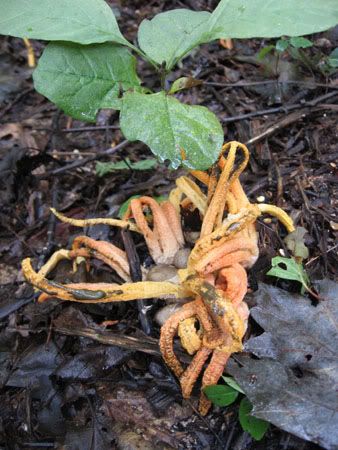365 Urban Species. #239: Dryad's Saddle #240: Stinky Squid
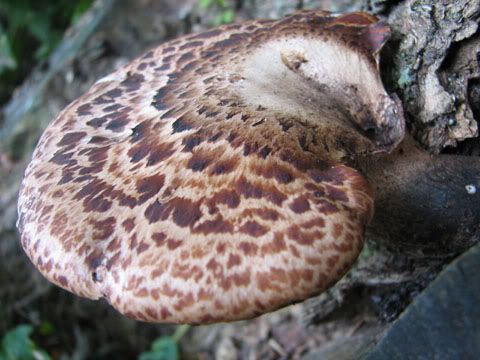
Photo by cottonmanifesto. Location: Boxelder tree along Leverett Pond, Boston.
Urban species #239: Dryad's saddle Polyporus squamosus

Photo by urbpan. Location: Ward's Pond, Boston.
Urban species #240: Stinky squid Pseudocolis fusiformus
According to some experts, of the thousands of varieties of fungal fruiting bodies, only about 70 have common names. In the interest of catching up from my vacation, today I present two of them.
Dryad's saddle is a mushroom that appears on dead trees, or on trees that soon will be dead. The fungus invades weak and sickened trees, and feeds on the dead wood inside. The fruiting bodies can be huge, nearly as big as real saddles. If they were made of sturdier stuff, they would be big enough for a person--or wood nymph--to have a place to sit. Their stuff is fairly sturdy, not woody like artist's conk, but rather fleshy and leathery. Earnest foragers will eat the young mushrooms, but their texture repels most others. After producing spores, the mushrooms blacken and rot, eaten mainly by the maggots of fungus gnats. Dryad's saddle is one of the more common wood-digesting fungi that grows mushrooms, and grows on a variety of different tree types.
Like all stinkhorns, stinky squid is a striking mushroom, as unusual to look at as it is unpleasant to smell. Carrion-eating insects are attracted to the foetid odor produced by the slimy gray-green spore mass. The tentacle-like fronds presumably help increase the available surface area to the flies and beetles that spread the spores. Interestingly enough, the first record of this fungus in North America was in Pittsburgh, in 1915. It has spread from there east to Boston and west to Kansas. It lives and feeds in very rich soil, and can be found in landscaping mulch, gardens, and the edges of gardens. Fans of the writing of H.P. Lovecraft should be delighted to encounter this urban species.
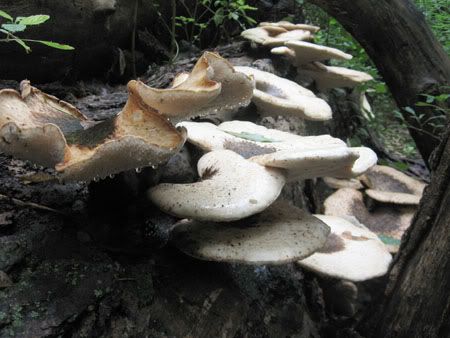
Photos by urbpan. Location: Olmsted Park woods, Boston.
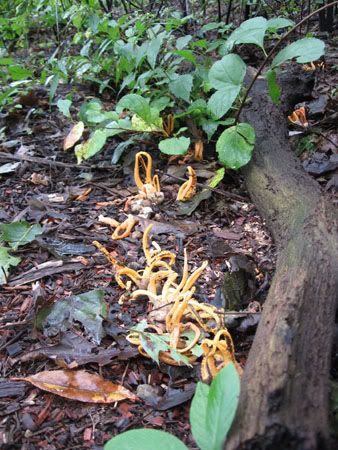
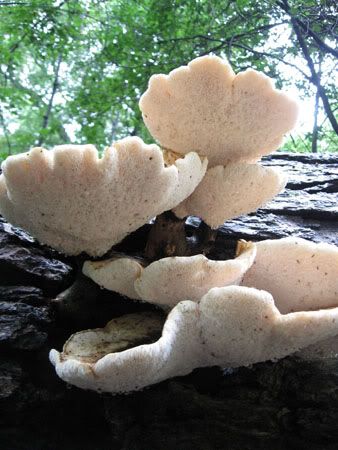
The spore-bearing surfaces of dryad's saddle mushrooms.
